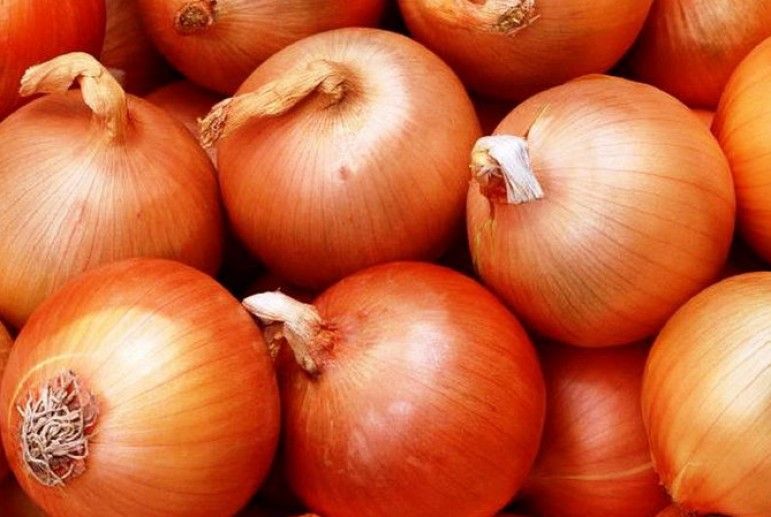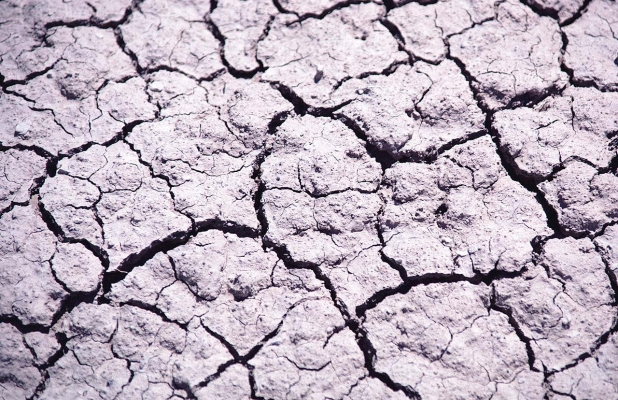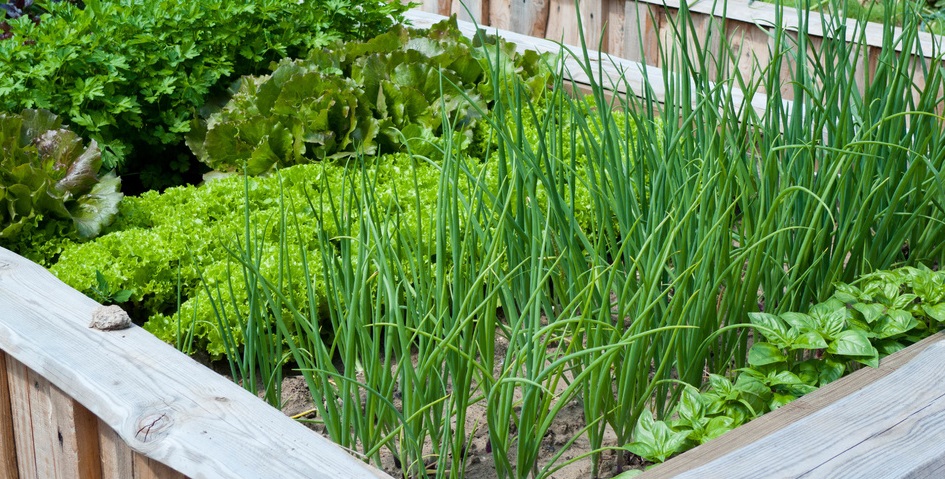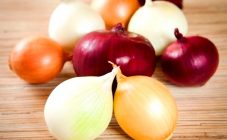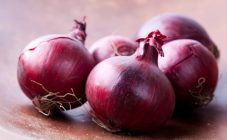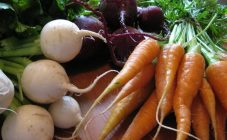Content:
The cultivation of onions is considered the most effective after vegetable crops that have been fertilized with a large amount of organic matter. The list of vegetables suitable for this contains a considerable number of units of names. It should be noted that planting onions in conditions of heavy clay soil will not contribute to obtaining a high-quality harvest. The planting bed should be located in a well-lit place, and the soil should have a loose structure, be fertile and breathable. In addition, onion sets cannot be planted in the same place for more than three years in a row. Garden flowers planted near onions, especially marigolds, will save the plant from the appearance of breeding centers for such species of insect pests as onion fly or cabbage.
Agrotechnology for growing onions
Such a garden plant as onions has a good indicator of resistance to cold snaps, the presence of which is characteristic of winter in the temperate and northern climatic zones of our country. The beginning of seed germination of this culture is possible at + 7 ° C air temperature. However, the timing of the appearance of the first shoots depends on the temperature during planting: the lower it is, the later the germination of green shoots will begin. Thus, after waiting for the spring with + 18 ° C temperature to set in the street to start planting, you can get germinated seedlings after 8 days.
Requirements for soil composition
It is best to plant onions in black soil with a pre-applied complex of mineral fertilizers. Providing thorough care allows the use of peatlands and loamy soil. Refusal to enrich loamy soil will result in a crop with low palatability and poor long-term storage capacity.
Planting onions in sandy soil is unacceptable. The soil in which the onions are planted should provide weathering and evaporation of excess liquid. In addition, the site for planting this garden crop must be protected from the effects of strong gusts of wind and not impede the flow of sunlight to the plants.
Land prepared at the end of the calendar fall will yield a higher quality crop. Carrying out this garden event is as follows:
- Thorough digging of soil;
- Removal of all plant residues.
In order for a variety of harmful microorganisms preserved in the soil material to freeze out in winter, leveling the soil surface should be abandoned. In the autumn season, you can fertilize the land with one of two available options for the composition of useful compounds:
- compost;
- phosphorus-potassium fertilizer.
In winter, the necessary microelements are assimilated, and with the onset of spring snow melting, they enter the deepest layers of the soil.
When the pH value exceeds 7, the feathery part of the plant stops growing and turns yellow. You can neutralize the composition of the soil by liming.However, after this procedure, you can plant onions in the treated area no earlier than 3 years later.
In addition, with the onset of spring, you can add a mixture of minerals, which includes (per 1 m2):
- 60 grams superphosphate;
- 10 grams urea;
- 20 grams potassium chloride.
It is not required to introduce this composition deep into the soil - it is enough to mix it with the soil using a garden rake.
3 weeks after planting the onions, it is necessary to fertilize the ridge with chicken droppings diluted with water in a ratio of 1:12. You can also start making an ammonia solution. For this, 30 grams of this trace element must be diluted in 10 liters of water.
Another agronomic technique aimed at improving the quality of the crop is planting the bulbs on a raised ridge, where the soil warms up most intensively compared to a conventional ridge. Consequently, the microclimate inside such a ridge is the most favorable. It is recommended to equip a place for landing using this technique in conditions of weighted soil.
Soil moisture requirements
Since this culture requires compliance with the required soil moisture regime, it is recommended to place planting material in an area where rainfall has access. A decrease in the soil moisture index is necessary when the plantings are in the ripening stage - this will have a positive effect on the shelf life of future root crops and increase resistance to a number of diseases. In this case, moisture supply should be at a half-meter depth of occurrence.
List of predecessors of onions
The need to maintain crop rotation is due to the fact that each garden crop planted in the soil has some effect on its composition. Failure to follow the alternation of planting types when cultivating in the same area of a particular crop can lead to complete depletion of the soil, making it unsuitable for planting any other plant. The unsystematic cultivation of fruit and vegetable crops is likely to lead to the accumulation of a large number of various pests. However, with the correct organization of crop rotation, the alternation of types of vegetables combined with each other will contribute to the development of immunity to many diseases and pests.
The main rule for crop rotation of onions is to grow crops in one place for no more than three years. Since most summer residents are interested in the combination of onions with the most frequently planted vegetables, they have questions: is it possible to plant onions after cabbage, is it possible to plant onions after carrots. The list of the best predecessors of onion crop rotation, which includes onion predecessors when planting, which go well with this root crop, includes those that were abundantly fertilized with organic matter last year, including:
- tomato;
- White cabbage;
- kohlrabi cabbage;
- eggplant;
- spinach;
- zucchini;
- squash;
- celery;
- lettuce;
- pumpkin;
- cucumber;
- potato bush;
- garden strawberries;
- beet.
Crops prohibited from rotation
The list of vegetables, after which onions cannot be planted, in order to avoid crop loss, includes:
- dill;
- turnips;
- beans;
- radish;
- radish;
- peas;
- broccoli cabbage;
- parsley;
- parsnip;
- sage;
- chives.
Incompatible onion precursors
The most common reason why it is contraindicated to grow onion planting material next to such garden crops as, for example, beets, carrots or spinach, is the ability of these plants to accumulate large amounts of nitrates, these are prohibited precursors of onions when planting. Incorrectly selected planting of adjacent crops can lead to a complete loss of yield.
Variety of combined ridges
Onions planted next to other horticultural crops are considered to be more fruitful, healthy and have better gastronomic properties. Reproduction of this type of vegetable is carried out by seed, which allows it to be sown in the late autumn period. However, the most healthy plantings are those sprouted from seeds in greenhouse conditions in spring.
The most common option for combining onion plantings is the combination of this root crop with parsley, carrots and radishes. First of all, the ridge is divided into 4 furrows, the distance between which is just over 20 centimeters, after which the planting material of the onion sets is planted. The distance between the bulbs in the rows is 10 centimeters. Radishes are planted in each row between the bulbs. In a similar way, furrows are planted with the rest of the crops.
An equally well-known way to create a combined ridge is to alternate onion sets with carrots, tomatoes, watercress and chives. Sowing the seed of all crops, the distance between which is 8 centimeters, is carried out in the following order:
- carrot;
- onion sets;
- free furrow;
- chives;
- watercress.
Tomatoes are planted in the center on such a ridge in a free furrow. First, the watercress is harvested, followed by the chives and onion sets.
The answers to the most frequently asked questions: is it possible to plant onions after potatoes or is it possible to plant onions after growing cabbage, is it possible to plant carrots after onions, have been described in this material. Planting onions next to plants that can positively affect the state of the plantings is one of the most effective methods of positively influencing the quality indicator of yield.
However, it is equally important to avoid planting onions with varieties of garden crops, such as spinach or carrots, which do not go well with it. A correctly selected predecessor, or, in particular, the creation of a combined ridge, will not only save, but also increase the yield of cultivated root crops.
